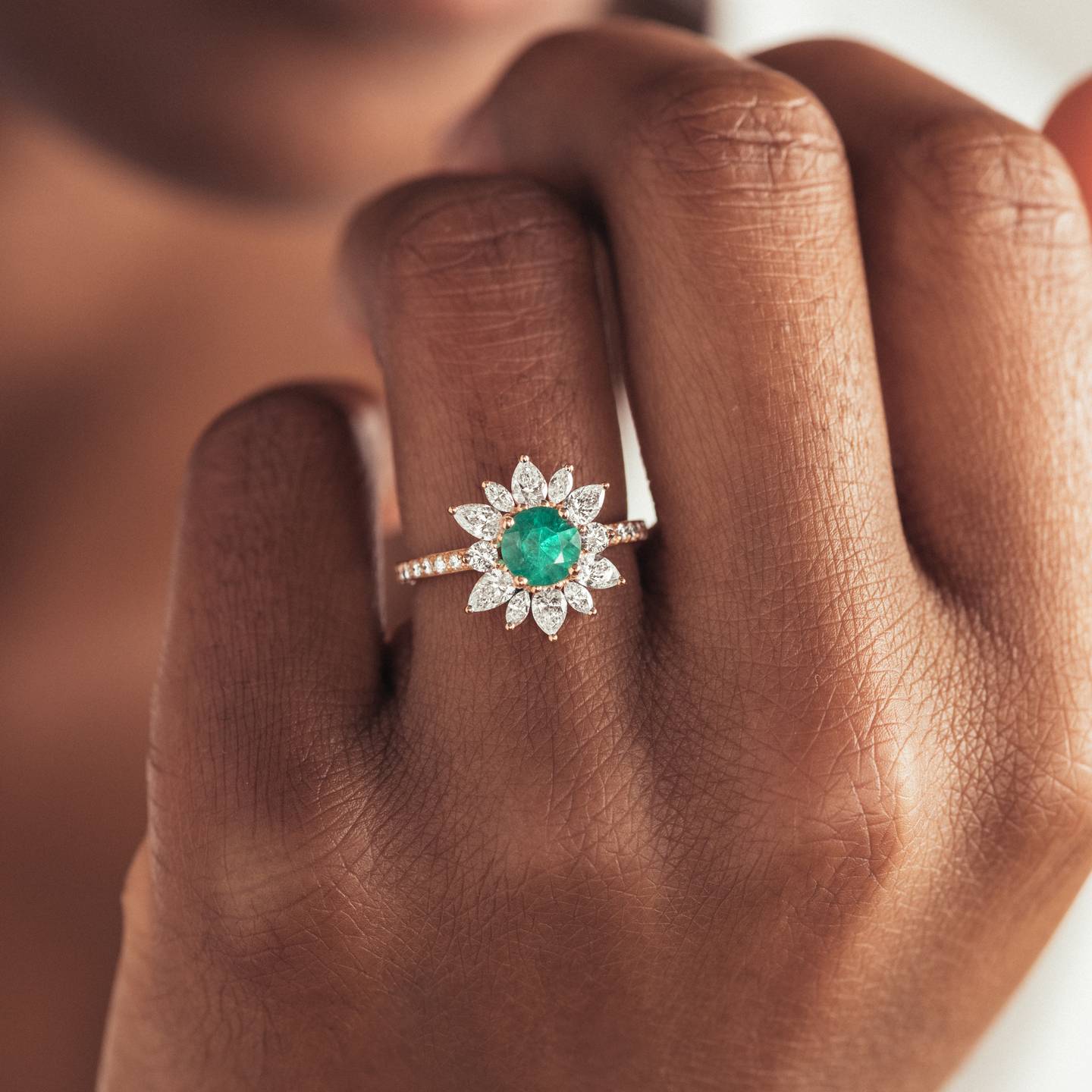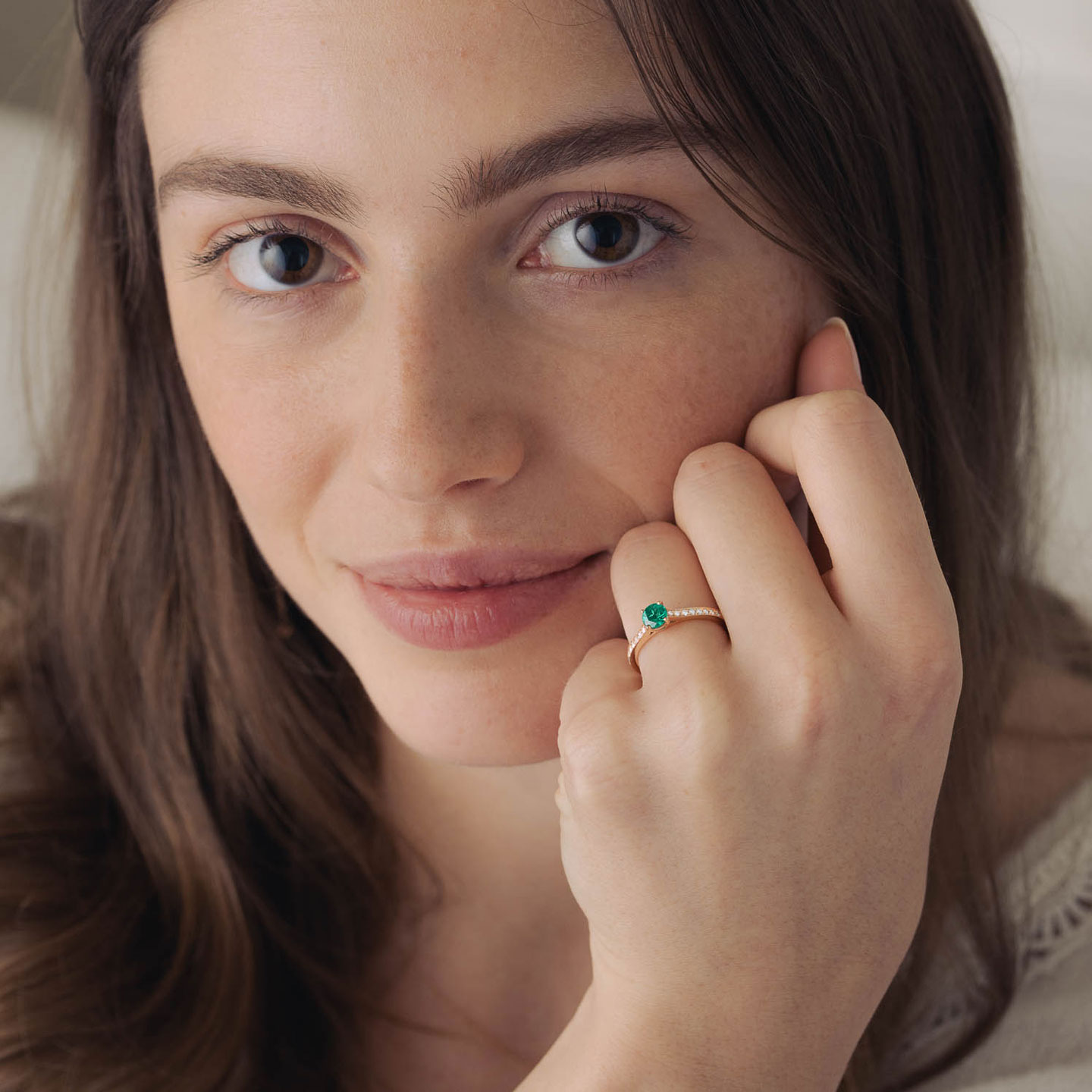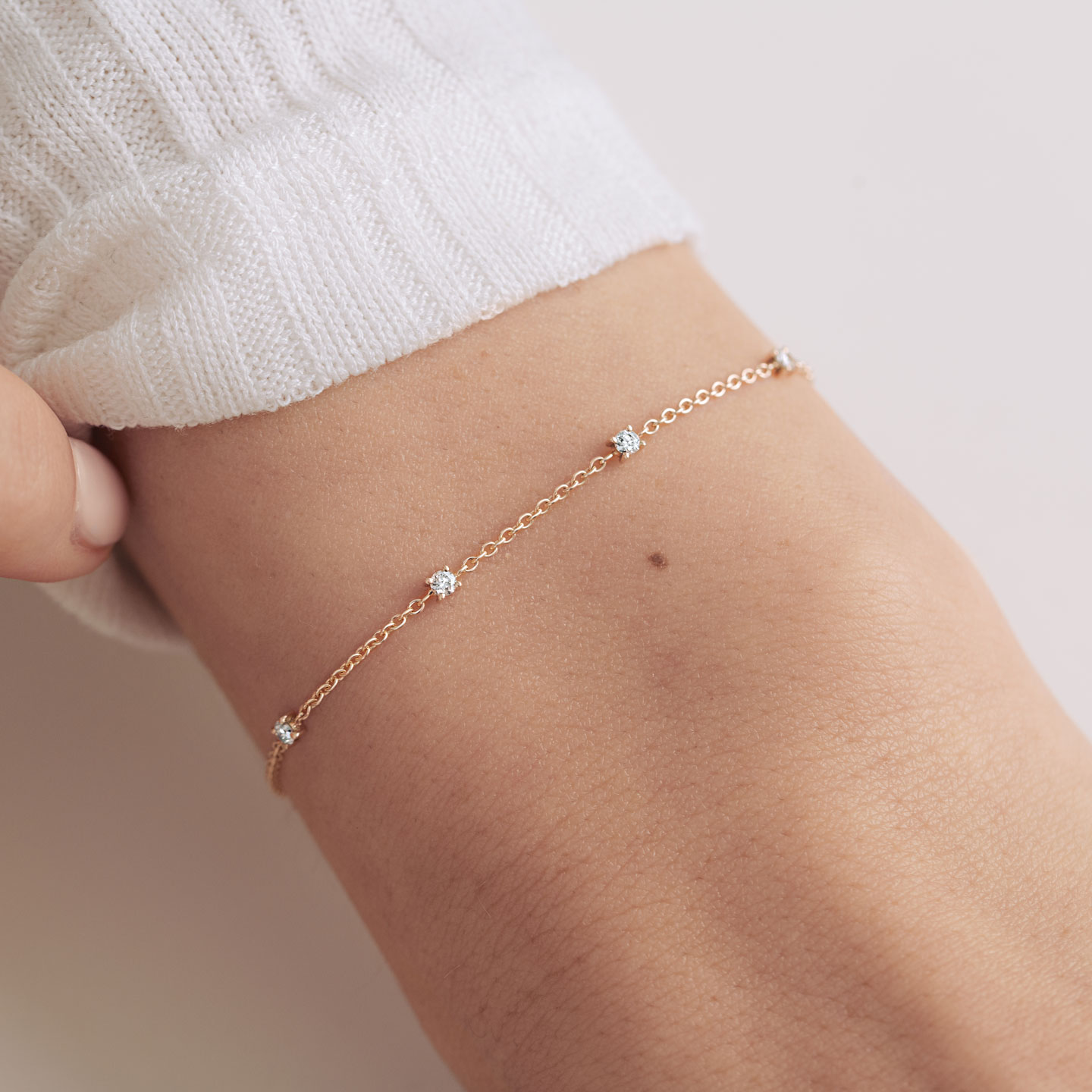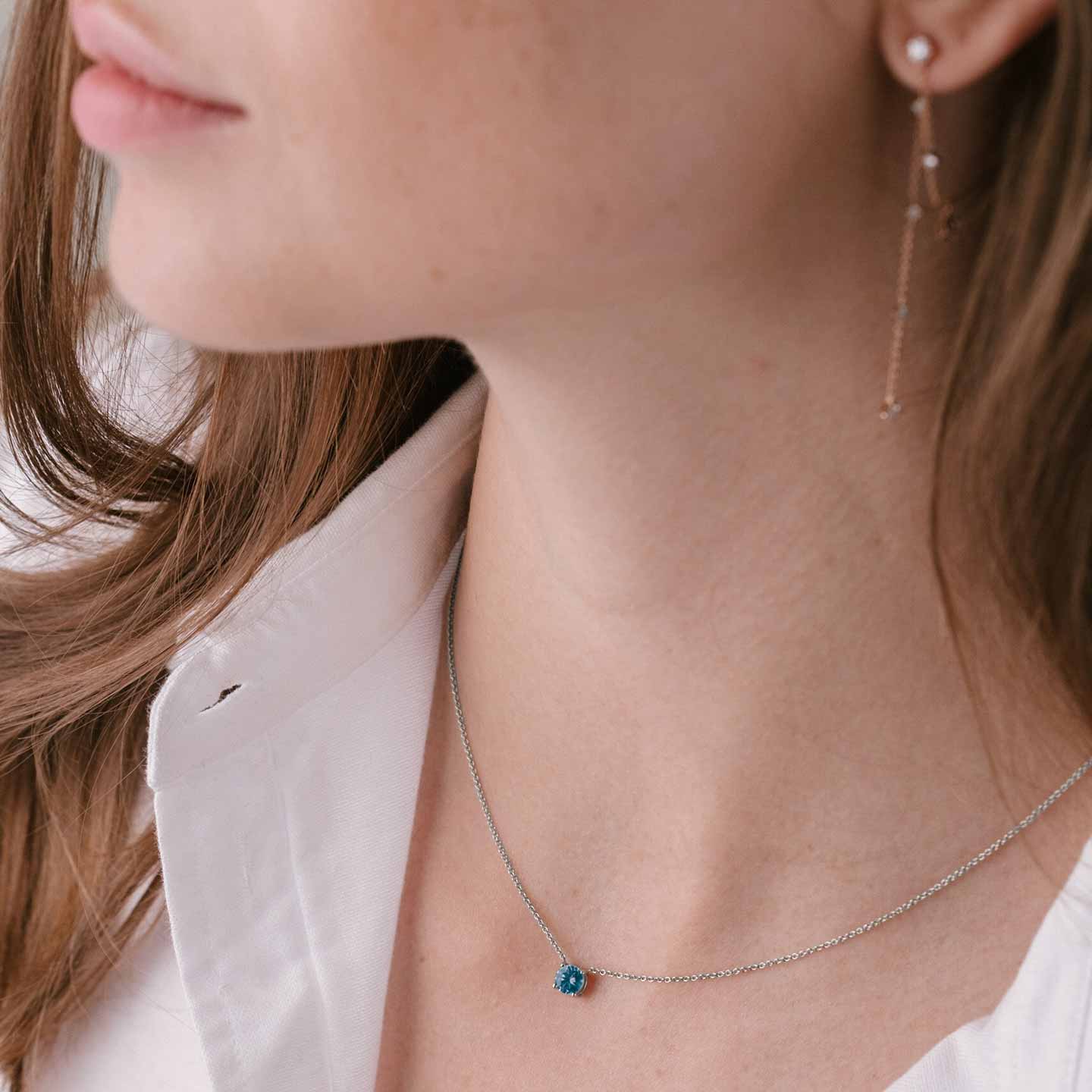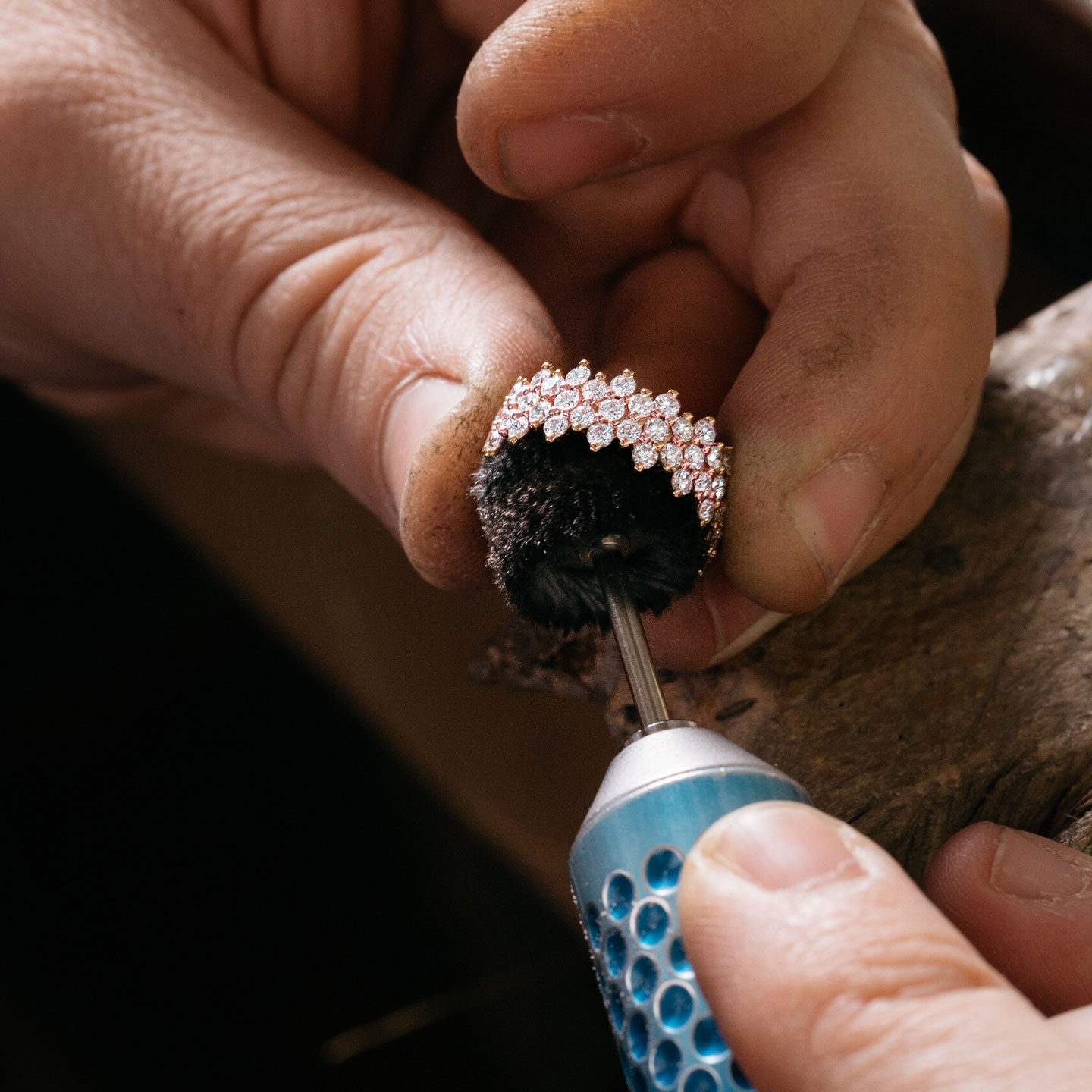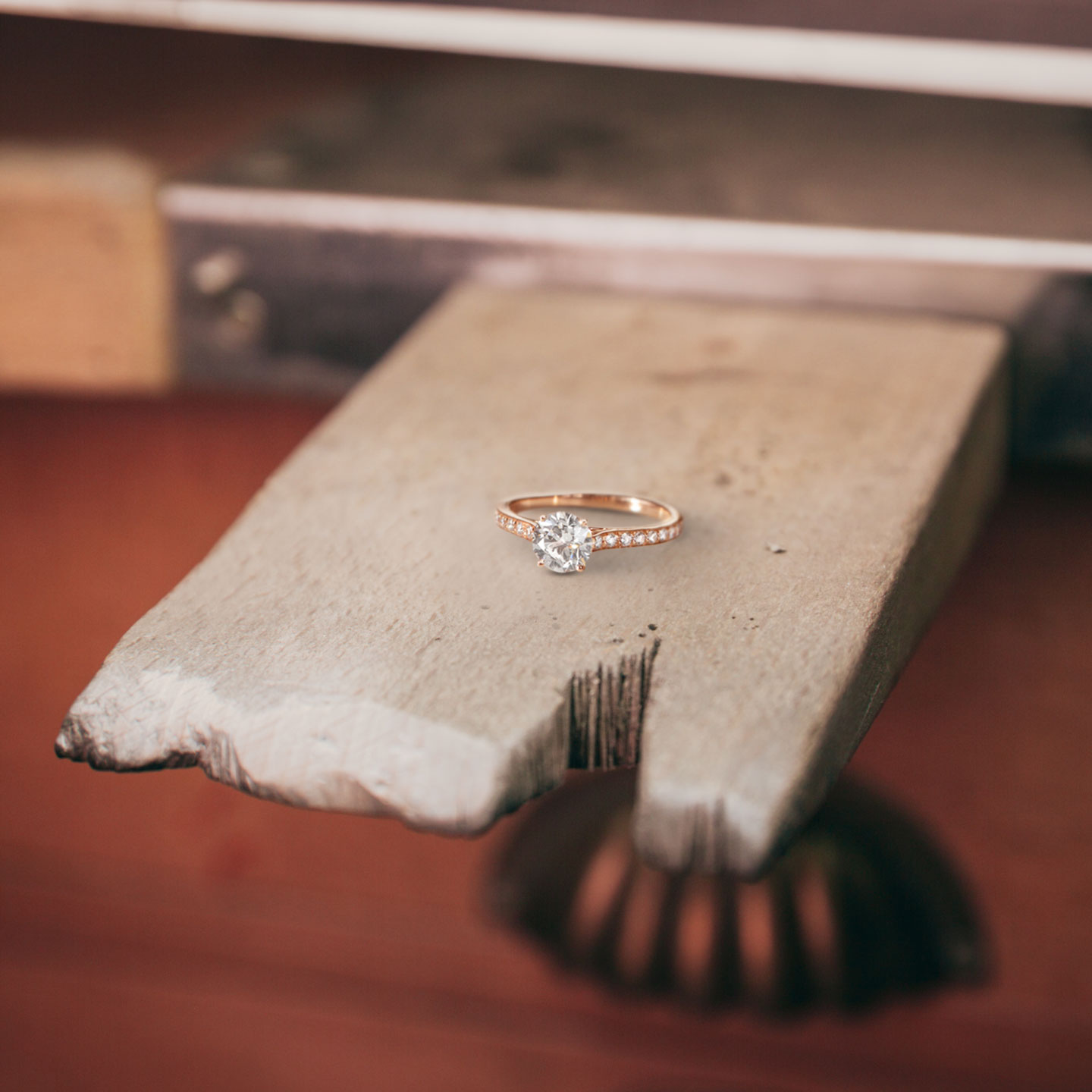Few objects last over time. They often spoil or become obsolete. This is why jewelry is such a unique object. It draws its symbolism from the fact that it can be worn for decades, or even passed on, generation to generation. However, a piece of jewelry is also an object intended to be worn on a daily basis and will therefore inevitably show signs of time, regardless of its composition or price. Simply because it lives with you.
We are often asked what is the secret to ensuring that a piece of jewelry never gets damaged? The most accurate answer would be to say: "Never wear it". But you have to admit that would be a shame!
That's why we wanted to share with you this guide to good habits to adopt so that your jewelry can withstand the challenge of time.
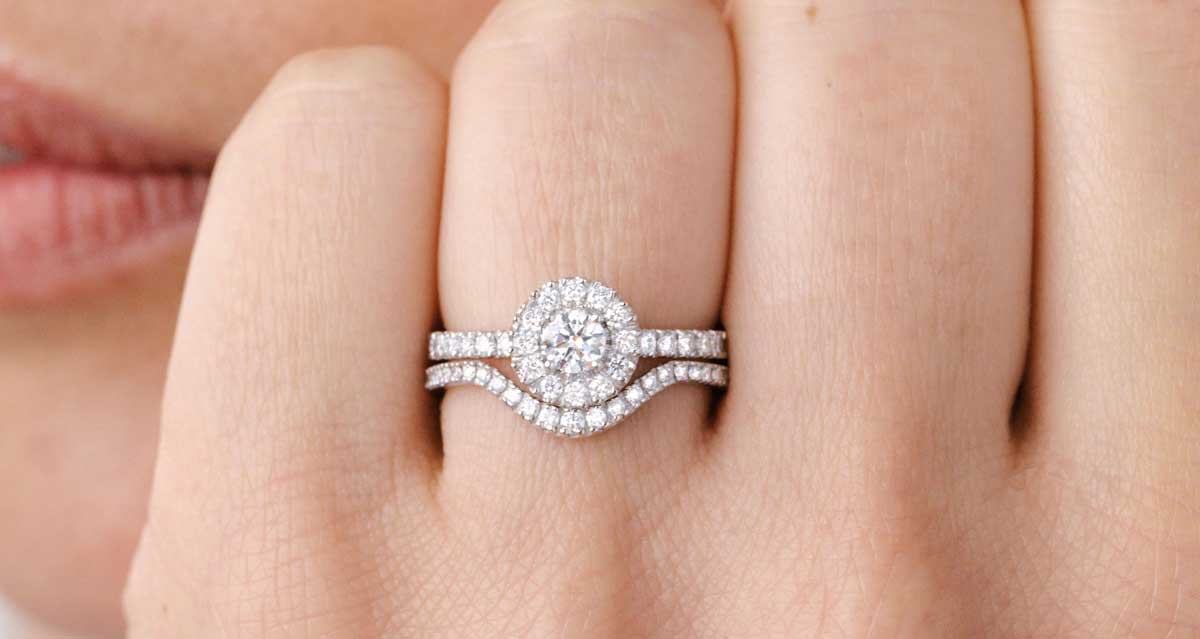
Some preconceived ideas
Some preconceived ideas
Before launching into this guide, let's remind ourselves of a few factsand debunk some myths.
It is perfectly normal for the jewelry you wear to show signs of time, whatever its composition or price, because it lives with you. That said, beyond the scratches of everyday life, the more you look after your jewelry, the better it will age.
Like a nice pair of shoes or a fine piece of leather product, "quality" doesn't mean you shouldn't pay attention. Just as you would never think of hiking in the mountains in your best pair of leather shoes, wearing jewelry without damaging it also requires a little common sense.
Finally, let's make it clear that all the advice we are about to give you is specifically adapted to a ring with one or more stones. An all-metal wedding band, a pendant ou earrings are naturally less exposed to the little hazards of our daily lives.
This being said, we can launch into this much anticipated guide of 8 habits to adopt to maintain your jewelry!
Our guide to jewelry care
Our guide to jewelry care
—— 1. Remove your jewelry before washing your hands or taking a shower
Let's start at the beginning... that is to say the quick and easy things you can do to ensure your jewelry retain its shine!
Even if we all live in fear of forgetting our jewelry at the edge of a sink, removing your rings before washing your hands or showering is a simple and very effectient way to maintain your jewelry's shine.
Indeed, you should know that stones can become tarnished because of a thin layer of dirt due to the use of creams, shampoos or other body products! In concrete terms, deposit can form over time and will cloud the stone's pavilion because it prevents the light from reflecting perfectly off the crystal. The stone will appear slightly milky, which is a shame!
The easiest way to avoid this is to remove your rings before you do any skin care. When you wash your hands, make it a habit to put your jewelry in a pocket beforehand. You will then also avoid the risk of accidentally losing them down a drain... every jeweler's nightmare
Don't worry, all the metals and stones we offer are obviously chosen for their water resistance: we just want to guide you in order to avoid your stones losing their shine when they get covered with a little soap or cream.
Please note: 925 silver is particularly sensitive to humidity, so it is strongly recommended not to immerse it too much, or if you do, remember to dry it well.This will prevent it from oxidizing too quickly.
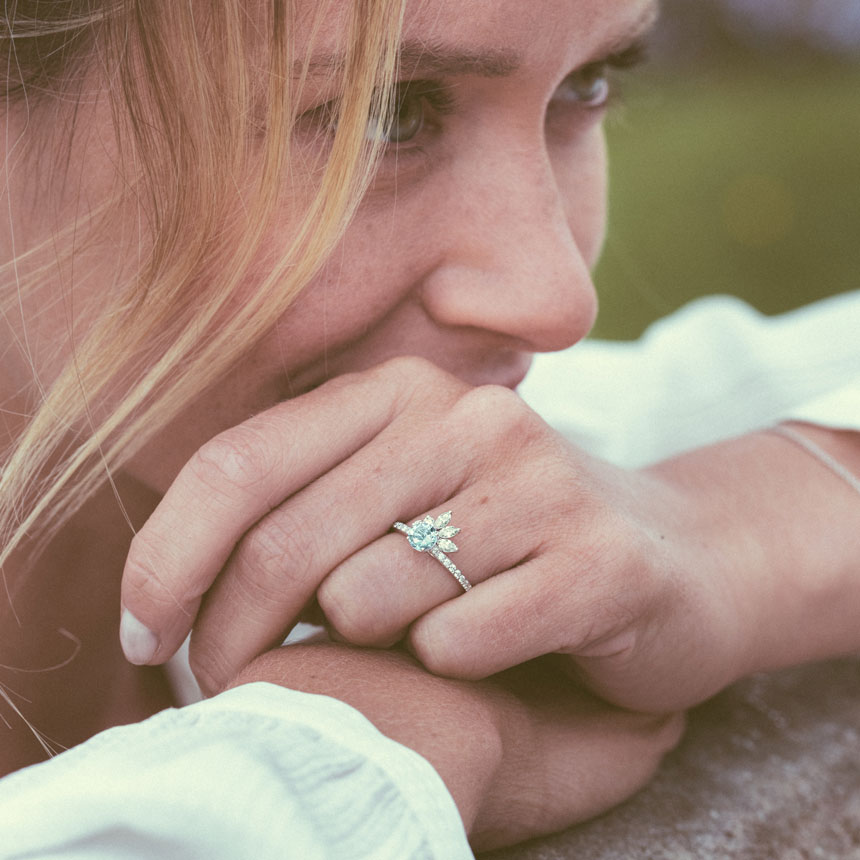
—— 2. Avoid chemicals
Contrary to what you might think, activities as mundane as gardening, washing dishes, cleaning or diving into a chlorinated pool are not always a good match for wearing jewelry.
These activities carry two risks:
We are naturally not as careful when we partake in such activities, which is never good for jewelry.
The products we use are harmless to us, but could damage the metal and/or the stone(s).
If you work in a medical environment, we recommend that you remove your jewelry if you handle chemicals, even if you are wearing gloves.
In general, whether it is your job or simply cleaning at home, we advise you to avoid wearing your jewelry under gloves. Even though your rings will be protected from chemicals, they will not be safe from accidentally rubbing or bumping while you are working... it would be a shame to damage them in these conditions!
Our advice for everyday life
“Don't take the risk of damaging your jewelry with a product that you don't know could be harmful to it. If you have the slightest doubt, take it off!”
—— 3. Avoid risky situations
We can't tell you enough: no matter what metal, stone or model, a piece of jewelry is still a precious object. Just like a fine leather product, a suede jacket or a pair of leather shoes, it is essential to avoid situations that could damage them.
Beyond the normal signs of time, such as fine scratches on the metal, which are part of the patina of a worn piece of jewelry, care must be taken not to deform its structure. It is not easy to repair a piece of jewelry's frame . The costs are often significant. It is a technical and meticulous job, which in some cases requires the entire jewelry to be remade.
In order to avoid these unpleasant situations, we therefore recommend that you remove your jewelry during any activity that could deform your jewelry, such as a knock or a hit!
It would be impossible to list all the activities concerned, but we can at least underline the ones we encounter most often through our clients:
Playing sports: no to climbing, volleyball and even skiing. Why take the risk of damaging your diamond ring during one of these activities? Don't worry though, walking or running is tolerated, even with diamonds
Carrying heavy loads: it may seem ridiculous, but when you move groceries, suitcases or heavy bags, you risk, without realizing it, putting pressure on your ring. Repeated pressure on the setting of your jewelry in the same place can lead to the deformation of the ring. Often without even noticing it!
Our advice: When shopping, ladies, this is an excellent excuse to make your husband carry the groceries. Or more seriously, try as much as possible to avoid putting all the weight of the load on your ring's setting (by carrying your bag at your fingertips for example).
Did you know?
“ What does deformation mean? This word may seem disproportionate. When we talk about a deformed ring, it is not necessarily broken in two or completely twisted.
Often a deformity is slight and hardly visible to the untrained eye. This is the case, for example, of a ring that has become slightly oval: it is not immediately obvious! However, this type of small deformation is very often the cause of a misplaced stone.
Indeed, when a ring that was originally round becomes slightly oval, the claws that hold the stones in your jewelry are subjected to pressure from the outside. If this pressure is too great, the claws will spread and the stone may come off the setting.
So it's best to avoid carrying heavy loads while wearing a ring as much as possible!
A little tip: To help you detect if your setting is not holding properly, the first sign of a potential problem is... a stone that moves. If this happens, don't wait any longer! Contact our customer service department now! ”
-
Manual occupations
To avoid any risk, we advise people who have a manual job not to wear a ring during their professional activity. Whether you are a physiotherapist, a cook, a craftsman, a painter, a nurse... we suggest leaving your ring in its case until the end of the working day.
-
Wearing your rings and earrings while sleeping
Even if you are not a sleepwalker, wearing your rings and earrings during a night of sleep involves unnecessary risks because you do not have full control of your movements. Without realizing it, you may knock your ring against your bedside table when you turn over or even fall asleep in a bad position and thus exert the pressure of your own body weight on your ring for long hours... which could deform it.
To be more precise: pendants can be worn while you sleep... unless of course it's a sautoir or an extravagant diamond necklace. But you have to admit that this would not be very comfortable anyway!
-
During your holidays
It is most often during the holidays that we forget to pay the most attention to our jewelry, especially when we have the pleasure of spending time by the sea or a beautiful swimming pool.
As an example, we unfortunately have many customers who have lost their rings while swimming in the sea. This happens much more often than you think! In cold water, our fingers shrink and jewelry becomes too big. And when the jewelry falls to the bottom of the ocean, it is impossible to recover it :-/ A mistake to avoid!

—— 4. Remember to store your jewelry properly when you take it off
We recommend that you get into the habit of putting your jewelry away in its case, a small suede bag or even better, in a jewelry box each time you take it off.
This way your jewelry will not fall on the floor or roll under a bed! It will be carefully kept in a safe place that will protect it.
However, remember not to put several pieces of jewelry in the same suede or pouch in order to avoid rubbing them together and thus reduce the risk of them getting scratched.
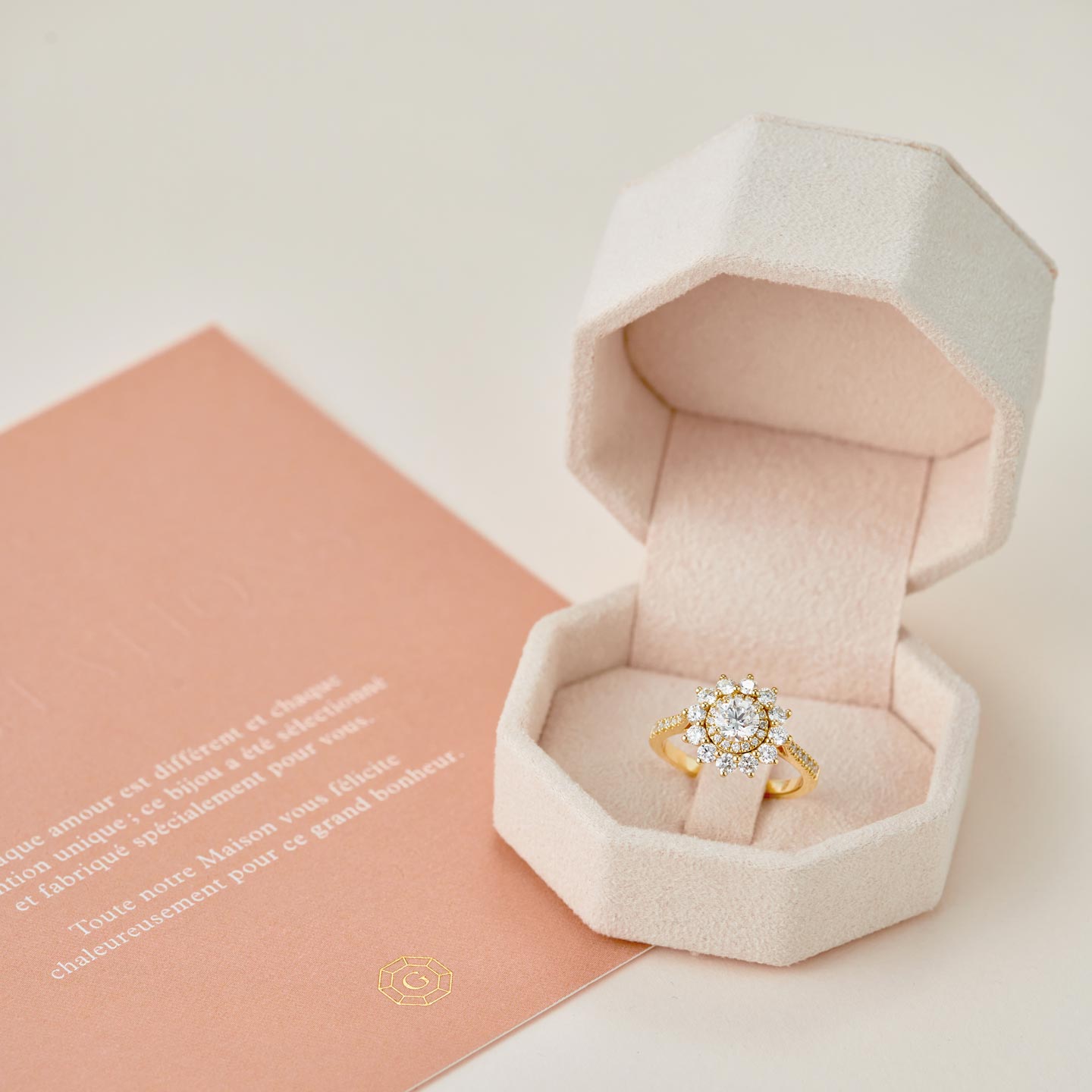
—— 5. Take care of your metals, they are not infallible
When we talk about metals, we often confuse quality with strength.
To illustrate this, let's take two concrete examples:
Black gold
This is 750/1000 (or 18K) gold, the best quality gold used in jewelry. The price of black gold is often even higher than that of its cousin yellow gold because of the surface treatment that gives it its beautiful color. Yet it will patinate much faster than yellow gold and will require even more attention.
All about 750/1000 (or 18K) black gold
Platinum
We often hear a comment from our customers in the boutique: "platinum is the most expensive metal, so it is the most resistant" well no, its cost comes from its rarity, its density (it is 40% denser than gold) and the fact that it is more difficult to work with than gold.
If its price is higher than gold, for example, this does not mean that platinum is more resistant. On the contrary, it is even more malleable than gold and therefore more prone to everyday scratches.
That being said, platinum does have the great advantage of remaining eternally white, unlike white or black gold, which develop a patina and turn yellow over time. It is for this reason, as well as for its rarity, that it is so popular in wedding bands or engagement rings.
Each metal family has its own properties, advantages and disadvantages and some metals are more suitable than others for everyday jewelry. Do not hesitate to follow our guide to metals to understand the advantages and disadvantages of the metal you have chosen..
If we were to summarize the subject of metal care: we would always advise you to choose gold or platinum if you want maximum resistance and durability over time for your jewelry. These are the two most suitable metals for everyday use.
Silver: a material that requires maintenance
“ Silver is widely used for tableware and needs special care. We are all aware of how silver is sensitive to humidity and the passage of time: let's remember the hours spent by our grandmothers polishing their silverware. It's no secret that silver oxidizes and darkens over time. It is therefore necessary to take care of it to slow down this perfectly normal process.
The first piece of advice we can give you is to remove your jewelry as soon as it comes into contact with water. When you wash your hands or take a shower, for example. Then, we also recommend that you regularly clean your jewelry with a small chamois cloth or with some product in order to give it back its former luster. Finally, you should know that depending on the pH of your skin, silver will not react in the same way. On some people it holds up well over time, on others it oxidizes and unfortunately turns black in a short time. That's why if you want a piece of jewelry that lasts, we recommend gold or platinum instead. ”
—— 6. Be careful with your emeralds
Despite their legendary beauty, emeralds are inherently more fragile stones than others for several reasons:
Firstly, emeralds are rated at 7,5/10 on the Mohs scale compared to, for example, 9/10 for sapphires and rubies or 10/10 for diamonds. The Mohs scale defines the hardness of a stone. It is clear that emerald is not as hard as these other stones, and therefore more brittle. If you wear an emerald, be careful to avoid shocks that could crack your stone or even break it. Even a small accidental blow, which may seem harmless to you, can unfortunately be dangerous for your emerald.
Emerald is a stone that is naturally full of micro-cracks. It is extremely rare to find perfectly pure emeralds and that is why for thousands of years, lapidaries have been filling in these crevices with a process called oiling. The emerald is immersed in an oil - usually cedar oil - to fill in these internal lesions and thus reinforce the hardness of the stone. Despite this ancestral treatment to make the emerald more luminous and resistant, this stone remains more fragile than others.
Finally, you should know that emerald is a stone sensitive to strong temperature variations. Therefore, we advise you to avoid thermal shocks with an emerald as much as possible. This can be the case during a hot/cold spell (you bask for hours in the sun before diving into the water) or even during extreme cold or high temperatures. To give you a sadly concrete example: do not keep your emerald ring on your finger when you take a cake out of the oven. It may become brittle and break just from the heat.
That being said, to reassure you, these situations remain rare and your emerald will not break at the first glimmer of sunlight but we advise you to keep these recommendations in mind to give it every chance of never breaking.
How to clean an emerald jewelry?
In order to clean your stone while avoiding prematurely diluting its oil, it is necessary at all costs to abstain from passing an emerald in a machine with ultrasound. If your emerald seems dirty, you can simply immerse it in water at room temperature for a few hours, rub it gently with a clean cloth, then dry it in the open air (avoiding the hair dryer!).
Finally, to restore the emerald's shine you can, from time to time, rub it gently with sweet almond oil. And if you have any doubts, don't hesitate to contact our customer service
—— 7. Don't overestimate your chains
Although the bracelets or pendants we offer are are designed to be as strong as possible, they are obviously still delicate.
Don't pull on them too hard or get caught, your chains could break...
Here are two cases that often cause problems:
You inadvertently pull on your chain while removing a heavy turtleneck jumper and break the chain in the process.
A baby or child plays with your chain and unintentionally pulls on it until it becomes brittle or broken.
When you find yourself in either of these situations, remember the words you have read here! A little precaution will save you from having to deal with the repair of your jewelry!
—— 8. Beware of snagging, especially with clothing!
Everyone who owns jewelry with a stone has usually experienced this situation. When you get dressed, put on a jumper, a coat or a scarf, your ring gets caught.
Don't worry, these little everyday snags are generally harmless: you will simply find a textile fiber stuck in one of the prongs.
But be careful! In some cases (and depending on the strength of the clasp), one of the claws could be twisted or even broken and thus let the stone escape from its setting. This is not a matter of the quality of the gold or the workmanship, but simply the result of a sad reality: a claw is a thin and delicate element, which does not tolerate external stress. Even if gold or platinum are very resistant metals, this kind of situation can be enough to deform it.
What to do in these conditions? Never underestimate a snag, even if it seems light, it can be dangerous for the claw of your jewelry. So if in doubt, contact us! Otherwise, simply be more careful in performing these movements, your jewelry will thank you!
—— 9. Take care of your cord bracelet
Our cord bracelets have been designed as second-skin jewelry for everyday wear.
The cord fabric has been chosen with the greatest care, for its impeccable quality and perfect thickness: neither too thin nor too thick, our cord bracelets are made in France from a satin fabric renowned for its robustness.
You can put on and take off your bracelet as often as you like, without fear of damaging it: the knots slide smoothly to adjust the cord to your wrist.
The fabric is water-resistant. So color and texture won't budge if you shower with it. Prolonged exposure to water is not recommended, however - freshwater or sea bathing - if you wish to preserve the condition of your bracelet for as long as possible.
Finally, if your bracelet is worn, come and see us in our boutique: we'll replace it with a new one, free of charge!
To conclude
It is not necessary to pay the same attention to an all-metal wedding band as to a pavé solitaire ring with a central gemstone.
A wedding ring without stones such as gold or platinum half jewels for example is jewelry that is designed to be worn every day and require very little attention. This is one of the advantages of this type of ring.
A more creative piece of jewelry, with pavé stones and/or a central stone, requires more vigilance because the risk of accidentally snagging or knocking it off is higher.
We are not advising you against wearing your jewelry and saying it is all fragile and not suitable for everyday life. Nothing could be further from the truth.
At Gemmyo, we pay the greatest attention to the durability, comfort and solidity of our jewelry. It is tested for several months before being offered to you so that we can be sure that you will be able to wear them without any problems in your daily life. However, a little common sense and care will ensure that you never have to worry about damaging your jewelry!

How to clean your jewelry
It is not always easy to know when and how to clean your jewelry. How often should we clean it? Do we need to buy a special product? A special brush?
Here are the solutions to the cases that may arise:
—— Cleaning slightly dirty jewelry
Frequency: Every month or so and/or as soon as necessary.
Our daily activities cause dust and small dirt to accumulate at the back of a stone and prevent the light from passing through. This makes your jewelry look dull and less shiny. Fortunately, there is a simple and effectient "grandmother's trick" to make your jewelry shine like it did on the first day!
How?
Take a little warm soapy water and a small soft-bristled toothbrush. This will allow you to reach the smallest corners of your jewelry with delicacy and to eliminate all traces of dust, in order to recover your stone's natural shine.
Our advice: avoid cleaning your jewelry with chemicals or, as another grandmother's trick suggests, toothpaste. Soapy water is more than sufficient and very effective!
—— Clean a piece of jewelry thoroughly
Frequency: Every 6 months or so.
Would you like to go even further and ensure a perfect cleaning? No problem!
Your once beautiful and shiny jewelry now looks dull? Your diamonds have lost their shine or perhaps even some of the stones appear warped? Why not give your jewelry a professional cleaning so that it looks as good as new?
How do I go about it?
We offer all our customers the opportunity to have their jewelry professionally cleaned. As many times as you like and at no cost . We welcome you in all our boutiques: make an appointment or drop by spontaneously! Our team will take care of everything! It only takes about ten minutes.
—— Restoring a piece of jewelry
Frequency: if necessary.
Does your jewelry look scratched? Has your metal lost its original color? There is a solution!
If you ever want to restore the original shine to your metal and/or completely erase the scratches from your jewelry, no other process is as effective as polishing in workshops.
In the case of white gold or black gold, two metals that can lose their color over time, we suggest that you do what we call a re-rhodium plating to restore their original color.
In the case of a metal with a brushed finish - like the St-Honoré model for example - our workshops can offer you what is called a "re-brushing" of your jewelry. This surface treatment can tend to fade over time and nothing is more effective than a visit to our workshops to restore your jewelry to its original state!
At Gemmyo, the first re-brushing is free! Do not hesitate to contact our customer service if you have any questions on this subject.
How?
Simply contact our team and we will take care of it for you! In general, this operation costs less than 100 euros.
An important detail
Please note that we only offer professional cleaning and repair in our workshop for Gemmyo jewelry! We simply do not want to take the risk of handling jewelry that we do not know.
Repairing your jewelry
You have just accidentally bent your setting, the chain of your pendant has broken or your wedding band is scratched? Don't panic, it happens to everyone. In fact, it happens quite often. That's why our team is here to help you find the best solution for your needs. Our goal is simple: to get you wearing your jewelry as quickly as possible.
—— What to do if my Gemmyo jewelry is damaged?
Step 1
Contact our customer service.
Step 2
Our teams are at your disposal so that you can explain your problem and to offer you a suitable repair solution.
Step 3
If necessary, the jewelry will be sent to our workshops and evaluated by our specialists:
If it is a manufacturing defect or if we have the slightest doubt about it, we will assume the entire cost of the repair.
If it is a handling defect, due to your daily use or a small accident, we will assist you as best we can to offer you the repair on adapted estimate to give you your jewelry back in its original state.
What is a manufacturing defect?
“ A manufacturing defect means that a piece of jewelry has a design flaw that makes it unreasonably fragile or that it has not been manufactured correctly.
A twisted, ovalized piece of jewelry, a stone that jumps out, are not manufacturing defects. These are things that happen when, in everyday life, you press a little too hard on a piece of jewelry and it becomes deformed. It happens to everyone. Let's not forget that a piece of jewelry is a precious object that needs to be treated with care, a bit like a nice pair of shoes. The durability and quality of the materials do not exclude a little care, quite the contrary! To understand in detail how a deformation can happen, read our explanations on this subject!
The manufacturing defect is usually visible as soon as the jewelry is received: a scratch that has passed through our quality control, a setting that does not appear straight, etc...
We work in an artisanal way and, even if we are recognized for our quality of manufacture, the error is human. We make it a point of honor to be totally transparent with our customers. If a manufacturing defect is detected, our specialists will know how to recognize it and we will repair your jewelry entirely at our expense. ”
—— Why should I have my jewelry repaired at Gemmyo?
Of course, if something goes wrong with your jewelry, you can opt to have it repaired by one of our colleagues. In absolute terms, this does not pose a problem. However, we advise you to entrust us with this task for several reasons:
Each Gemmyo piece undergoes a systematic double check, one by the workshop, the other by our team of specialists just before being placed in the case. This strict process allows us to make sure that your jewelry will have passed the robustness criteria that will allow it not to be damaged.
If your jewelry is repaired by one of our colleagues, our lifetime guarantee will no longer be effective. Indeed, we cannot guarantee the quality of a piece of jewelry that has been handled by a jeweler other than Gemmyo.
Finally, don't forget that our craftsmen know our jewelry perfectly! They are the ones who make them every day! Another jeweler could, without realizing it, weaken the structure of your jewelry, without us being able to do anything about it.
At Gemmyo, we make it a priority to accompany you with kindness and education when choosing your jewelry. You should know that we consider our after-sales service to be just as important. The durability of our creations is one of our greatest prides and we pay particular attention to it so that you can wear your Gemmyo jewelry for life... and more.

















